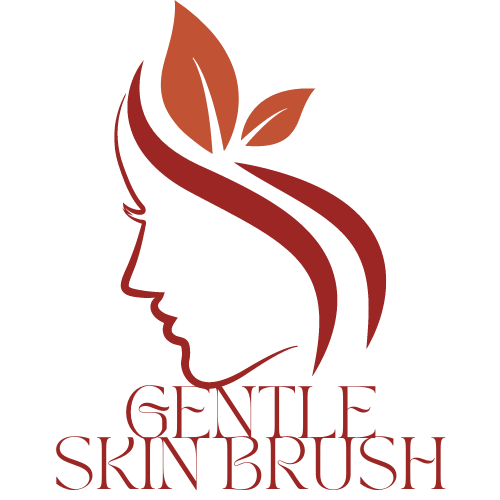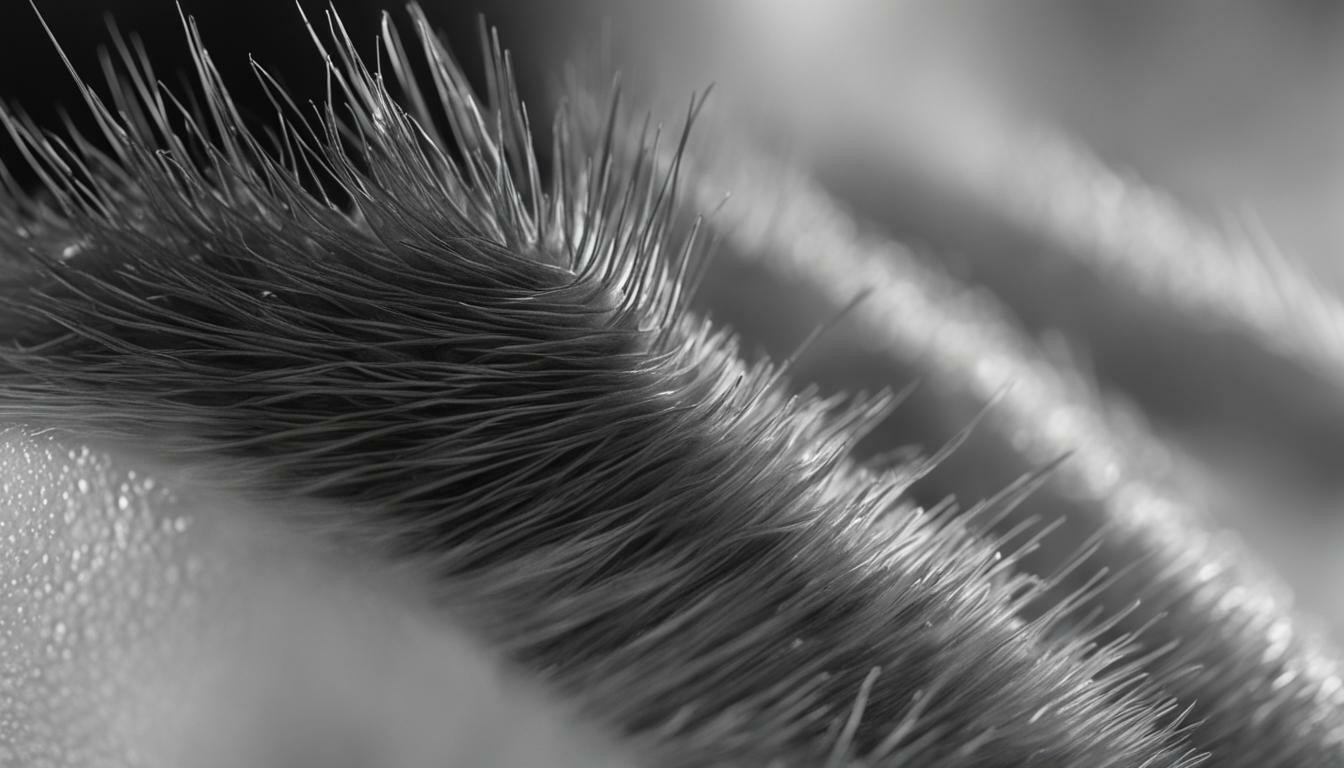Many people wonder if body brushing is an effective solution for combating ingrown hairs. The truth is that while body brushing can have some benefits for the skin, there is limited evidence to suggest that it specifically helps with ingrown hairs.
Body brushing involves using a brush to exfoliate the dry skin and stimulate blood and lymph circulation. It can help with overall skin health and improve the appearance of cellulite, but it is not a magic solution for eliminating ingrown hairs.
When it comes to body brushing, it is important to choose a brush with medium-firm natural bristles and to brush in upward sweeping circular motions. Dry brushing should be done once a week or every other week to avoid irritation.
However, it is worth noting that body brushing is not recommended for individuals with skin conditions like eczema or psoriasis, as it can aggravate the skin. Before incorporating body brushing into your routine, it is always a good idea to consult with a dermatologist or skincare professional.
After dry brushing, it is important to clean the brush and rinse off in the shower to remove dead skin cells. Finally, it is recommended to finish off with a hydrating moisturizer or body oil to lock in moisture and keep the skin hydrated.
Contents
Key Takeaways:
- Body brushing can have benefits for overall skin health, but there is limited evidence to support its effectiveness in preventing or treating ingrown hairs.
- Choose a body brush with medium-firm natural bristles and brush in upward sweeping circular motions.
- Dry brush once a week or every other week to avoid irritation.
- Avoid body brushing if you have skin conditions like eczema or psoriasis.
- After dry brushing, clean the brush and rinse off in the shower, then moisturize the skin to lock in moisture.
The Benefits of Body Brushing
Body brushing offers several advantages for the skin and can potentially aid in reducing the occurrence of ingrown hairs. This technique involves using a brush with medium-firm natural bristles to exfoliate the dry skin and stimulate blood and lymph circulation. By removing dead skin cells and promoting better circulation, body brushing can help improve the overall health and appearance of the skin.
While there is limited scientific evidence specifically linking body brushing to the prevention of ingrown hairs, it is believed that the exfoliating and stimulating effects of this practice may help to reduce their occurrence. Regular body brushing can help to unclog pores, prevent skin congestion, and promote healthy hair growth. It is important, however, to note that body brushing alone is not a guaranteed solution for eliminating ingrown hairs.
To get the most out of body brushing, it is recommended to brush in upward sweeping circular motions, starting from the feet and moving upwards towards the heart. This direction promotes lymphatic flow and encourages the elimination of toxins. It is also advisable to dry brush once a week or every other week to avoid over-exfoliation and potential skin irritation.
After dry brushing, it is essential to clean the brush and rinse off in the shower to remove dead skin cells. To further nourish and hydrate the skin, it is beneficial to finish off with a moisturizer or body oil to lock in moisture. This can help maintain the skin’s natural barrier and enhance its overall health and appearance.
| Benefits of Body Brushing: | How to Body Brush: |
|---|---|
| Exfoliates dry skin | Select a brush with medium-firm natural bristles |
| Stimulates blood and lymph circulation | Brush in upward sweeping circular motions |
| Improves overall skin health and appearance | Start from the feet and move upwards towards the heart |
| Can potentially reduce occurrence of ingrown hairs | Brush once a week or every other week to avoid irritation |
The Truth About Body Brushing and Ingrown Hairs
While body brushing has its merits, it’s important to understand its limitations when it comes to addressing ingrown hairs. The truth is that while body brushing can have some benefits for the skin, there is limited evidence to suggest that it specifically helps with ingrown hairs.
Body brushing involves using a brush to exfoliate the dry skin and stimulate blood and lymph circulation. It can help with overall skin health and improve the appearance of cellulite, but it is not a magic solution for eliminating ingrown hairs.
It is important to choose a body brush with medium-firm natural bristles and to brush in upward sweeping circular motions. Dry brushing should be done once a week or every other week to avoid irritation. It is not recommended for individuals with skin conditions like eczema or psoriasis. After dry brushing, it is important to clean the brush and rinse off in the shower to remove dead skin cells. Finally, it is recommended to finish off with a hydrating moisturizer or body oil to lock in moisture.
Table: Tips for Reducing Ingrown Hairs
| Tips | Details |
|---|---|
| Exfoliate regularly | Use a gentle exfoliating scrub or body brush to remove dead skin cells and prevent hair from getting trapped beneath the surface. |
| Keep skin moisturized | Dry skin can contribute to ingrown hairs, so make sure to moisturize regularly to keep the skin hydrated and soft. |
| Avoid tight clothing | Tight clothing can cause friction, leading to irritation and ingrown hairs. Opt for looser, breathable fabrics. |
| Shave in the direction of hair growth | Shaving against the grain increases the risk of ingrown hairs. Always shave in the direction that the hair is growing. |
| Consider professional hair removal | If you struggle with chronic ingrown hairs, you may want to explore professional hair removal options like laser hair removal. |
In summary, while body brushing can have benefits for overall skin health, its effectiveness in addressing ingrown hairs is limited. To reduce the occurrence of ingrown hairs, it’s important to exfoliate regularly, keep the skin moisturized, avoid tight clothing, shave in the direction of hair growth, and consider professional hair removal options for chronic cases. Remember to consult with a dermatologist for personalized advice and treatment options.
Body Brushing Techniques and Recommendations
To make the most of body brushing in preventing ingrown hairs, it’s crucial to employ proper techniques and choose the right brush. While body brushing may not specifically target ingrown hairs, it can help improve overall skin health and exfoliate dry skin, which may indirectly reduce the occurrence of ingrown hairs. Here are some body brushing techniques and recommendations to consider:
1. Choose the right brush:
When selecting a body brush, opt for one with medium-firm natural bristles. This type of brush provides effective exfoliation without being too harsh on the skin. Avoid synthetic bristles, as they may not provide the same benefits.
2. Brush in upward sweeping circular motions:
To properly exfoliate the skin, use gentle upward sweeping circular motions while brushing. Start from your feet and move upwards towards your heart. This technique helps stimulate blood and lymph circulation, promoting healthy skin.
3. Brush once a week or every other week:
Dry brushing should be done once a week or every other week to avoid over-exfoliating and irritating the skin. Consistency is key to achieving the desired results, so establish a routine that works best for you.
4. Avoid dry brushing if you have specific skin conditions:
If you have skin conditions like eczema or psoriasis, it is not recommended to dry brush. The bristles may further irritate the skin and exacerbate these conditions. Instead, consult with a dermatologist for alternative exfoliation methods suitable for your skin type.
Remember, dry brushing alone may not be the solution to preventing ingrown hairs. Incorporate other preventive measures like regular exfoliation, proper shaving techniques, and keeping the skin hydrated. By following these body brushing techniques and recommendations, you can support healthy skin and potentially minimize the occurrence of ingrown hairs.
| Key Recommendations |
|---|
| Choose a body brush with medium-firm natural bristles |
| Brush in upward sweeping circular motions |
| Brush once a week or every other week |
| Avoid dry brushing if you have eczema or psoriasis |
Conclusion
While body brushing can have various benefits for the skin, there is limited evidence to suggest that it specifically helps with ingrown hairs.
Body brushing involves using a brush with medium-firm natural bristles to exfoliate the dry skin and stimulate blood and lymph circulation. This can contribute to overall skin health and improve the appearance of cellulite. However, it is important to note that body brushing is not a magic solution for eliminating ingrown hairs.
To effectively body brush, choose a brush with the right bristle firmness and brush in upward sweeping circular motions. It is recommended to dry brush once a week or every other week to avoid irritation. Individuals with skin conditions like eczema or psoriasis should avoid dry brushing.
After dry brushing, it is essential to clean the brush and rinse off in the shower to remove dead skin cells. To lock in moisture, finish off with a hydrating moisturizer or body oil. These steps can help maintain and improve the overall health and appearance of your skin.
FAQ
Q: Does body brushing help eliminate ingrown hairs?
A: While body brushing can have some benefits for the skin, there is limited evidence to suggest that it specifically helps with ingrown hairs. Body brushing is more effective for overall skin health and improving the appearance of cellulite.
Q: What is body brushing?
A: Body brushing involves using a brush with medium-firm natural bristles to exfoliate dry skin and stimulate blood and lymph circulation.
Q: How often should I body brush?
A: Dry brushing should be done once a week or every other week to avoid irritation.
Q: Can everyone body brush?
A: Body brushing is not recommended for individuals with skin conditions like eczema or psoriasis.
Q: What is the proper technique for body brushing?
A: It is important to brush in upward sweeping circular motions to effectively exfoliate the skin.
Q: How should I clean my body brush?
A: After dry brushing, it is important to clean the brush and rinse off in the shower to remove dead skin cells. Regularly washing your brush will help maintain its cleanliness and effectiveness.
Q: Should I moisturize after body brushing?
A: It is recommended to finish off with a hydrating moisturizer or body oil to lock in moisture after body brushing.





Leave a Reply